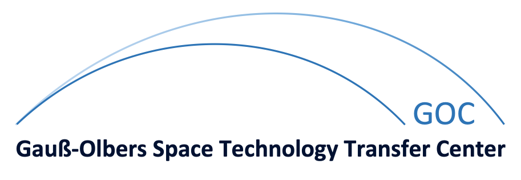Algorithms and hardware structures for the provision of raw data in invasive neuro systems (INNS)
The parallel acquisition of a large number of neural signals is paramount for ongoing research in the fields of neuroscience like medical diagnostics, neural prostheses and the development of Brain-Computer-Interfaces (BCIs). Therefore, neural implants must be able to deliver a large number of neural signals at high spatial and temporal resolution in an accurate and lossless way. A cable-driven invasive measurement of brain waves dramatically increases the risk of serious infections and massive irritations in brain tissue, which necessitates a wireless data transmission. The key challenge in this context is the transfer of the amount of measured data. In order to wirelessly transfer neural raw data sampled at the Nyquist rate, transmission rates of over 200Mbit/s would be required for future electrode arrays with 1000+ electrodes. However, latest available certified RF transceivers for implantable medical applications offer data rates at a factor of 400 times below this. To close this gap and to comply with the restrictions of a fully implantable system in terms of energy consumption and chronic tissue heating, innovations in the entire signal path are imperative. One way to address this target is a reduction in data rate already at the acquisition stage while preserving the signal’s information.
Therefore, the main target of this project is the development of novel algorithms and hardware architectures for innovative A/D converters exploiting inherent signal structures at the acquisition stage to efficiently reduce the amount of measured data. To achieve this target both “Compressed Sensing” and “Finite Rate of Innovation” theories will be applied to neural Action Potentials (APs) and Local Field Potentials (LFPs). To this end, it is necessary to (a) develop the signal theory foundations and (b) to find suitable hardware architectures.
From a signal processing point of view, the theories of “Compressed Sensing” and “Finite Rate of Innovation” will be extended in terms of signal modeling and reconstruction algorithms to exploit general signal correlations. Based on this, methods for efficient sampling and reconstruction of a large number of parallel neural signals will be devised. Furthermore, the simultaneous acquisition and processing of LFPs and APs will be investigated. The implementation of according A/D converters firstly requires identification of the models and algorithms that are suitable for efficient implementation. To fulfill the neurophysiologic restrictions, a tradeoff between the lowest possible data rate and the energy consumption of A/D conversion has to be identified. In order to demonstrate this novel way of A/D conversion along with data reconstruction, the system will be integrated into an existing neural measurement system. To evaluate the performance of the converters, an integrated circuit fabricated in a standard CMOS process will be realized. Note, that this circuit should be potentially implantable. This way, the achievable gains in data compression through Compressed Sensing can be proven experimentally.
Details
| Duration: | 05/2014 - 06/2017 |
| Funding: | German Research Foundation |
| Partners: | Institut für Theoretische Elektrotechnik und Mikroelektronik (ITEM), University of Bremen |
| Research Focus: | Compressive Sensing in Wireless Communications |
Publications
-
Modeling the Active Neuron Separation in the Compressed Sensing and Finite Rate of Innovation Framework
BibTEX
T. Schnier, C. Bockelmann, A. Dekorsy
IEEE Transactions on Signal Processing, Vol. 67, No. 17, pp. 4521-4534, September 2019 -
SparkDict: A Fast Dictionary Learning Algorithm
BibTEX

T. Schnier, C. Bockelmann, A. Dekorsy
25th European Signal Processing Conference (EUSIPCO 2017), Kos Island, Greece, 28. August - 1. September 2017 -
A Theoretical Analysis of the Spatial Multi Channel Compressed Sensing Model
BibTEX

T. Schnier, C. Bockelmann, A. Dekorsy
The 18th IEEE International Workshop on Signal Processing Advances in Wireless Communications, Sapporo, Japan, 3. - 6. July 2017 -
Reduction of Necessary Data Rate for Neural Data Through Exponential and Sinusoidal Splines Decomposition Using the Finite Rate of Innovation Framework
BibTEX

T. Schnier, C. Bockelmann, A. Dekorsy
The 42nd IEEE International Conference on Acoustics, Speech and Signal Processing (ICASSP 2017), New Orleans, USA, 5. - 9. March 2017 -
Minimum Measurement Deterministic Compressed Sensing based on Complex Reed Solomon Decoding
BibTEX

T. Schnier, C. Bockelmann, A. Dekorsy
24th European Signal Processing Conference (EUSIPCO 2016), Budapest, Hungary, 29. August - 2. September 2016 -
RSCS: Minimum Measurement MMV Deterministic Compressed Sensing based on Reed Solomon Coding
BibTEX

T. Schnier, C. Bockelmann, A. Dekorsy
The Asilomar Conference on Signals, Systems, and Computers, Asilomar Hotel and Conference Grounds, USA, 8. November 2015







